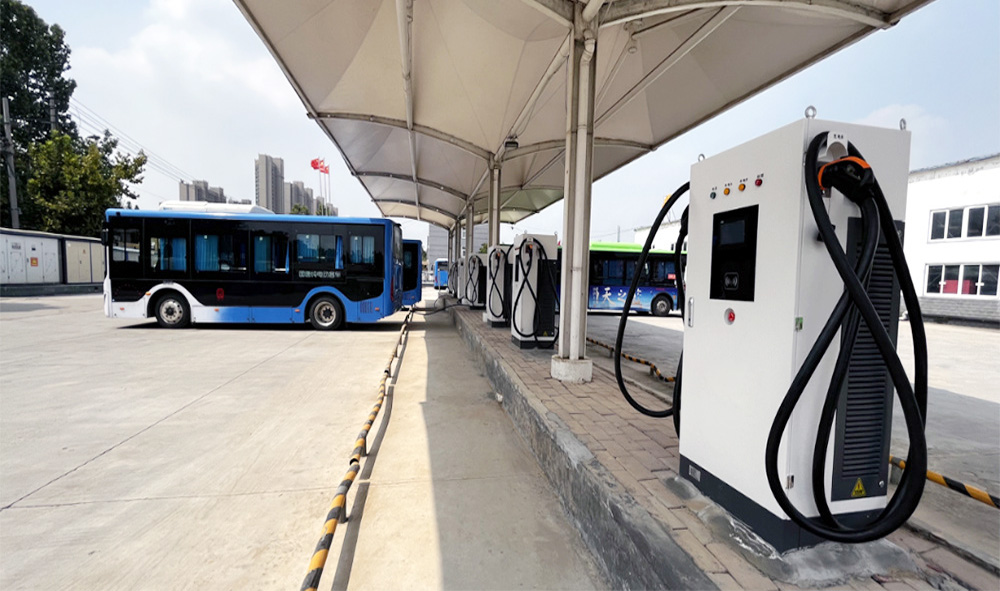With the change of global energy structure and the popularization of environmental protection concept, the new energy vehicle market is rapidly rising, and the charging facilities supporting it have also received unprecedented attention. Under China’s “Belt and Road” initiative, charging piles are not only booming in the domestic market, but also showing broad application prospects in the international arena.
In the countries along the “Belt and Road”, the use of charging piles is becoming more and more common. Seeing China’s leading position in the field of new energy vehicles, these countries have introduced China’s charging pile technology to meet the rapidly growing demand for charging new energy vehicles in their countries. For example, in some countries in Southeast Asia, Chinese-made charging piles have become the main source of charging for local public transportation and private electric vehicles. Governments and companies in these countries prioritize the introduction of Chinese charging pile products and services when promoting new energy vehicles.
In addition to the popularity of their use, the prospects for charging piles in the Belt and Road countries are also very promising. First of all, these countries are lagging behind in infrastructure construction, especially in the field of charging, so there is a huge market space. With the continuous export of Chinese technology, the construction of charging facilities in these countries is expected to be significantly improved. Secondly, with the global emphasis on environmental protection and government policy support for new energy vehicles, it is expected that in the next few years, the new energy vehicle market in the countries along the “Belt and Road” will usher in explosive growth, which will further drive the demand for charging pile products.
Under the “Belt and Road” initiative, charging pile products have been widely used in many countries along the route, the following are some country-specific examples:
——————————————————————————————————————————————————————————————————————
Uzbekistan
Usage:
Policy support: The government of Uzbekistan attaches great importance to the development of the new energy vehicle industry and has included it in the Development Strategy 2022-2026, which clearly sets out the strategic goal of transitioning to a “green economy” and focuses on promoting the production of electric new energy vehicles. To this end, the government has introduced a series of incentives, such as land tax exemption and customs duty exemption, to encourage the construction of charging stations and charging piles.
Market growth: In recent years, the demand for electric new energy vehicles in Uzbekistan has grown rapidly, with annual imports increasing rapidly from just over a hundred units to more than a thousand units now. This rapidly growing demand has led to the rapid development of the charging pile market.
Construction standards: Uzbekistan’s charging station construction standards are divided into two categories, one for Chinese EVs and the other for European EVs. Most charging stations use charging equipment of both standards to meet the charging needs of different brands of electric vehicles.
International cooperation: The cooperation between China and Uzbekistan in the new energy electric vehicle industry is deepening, and a number of Chinese charging pile manufacturers have completed project docking, equipment transportation and assistance in installation and operation in Uzbekistan, which accelerated the entry of customers in the new energy electric vehicle industry of China and Uzbekistan into the market.
Outlook:
The charging pile market is expected to continue to grow rapidly as the government of Uzbekistan continues to promote the new energy vehicle industry and market demand continues to grow.
It is expected that more charging stations will be distributed around cities or even down to secondary cities or regions in the future to meet a wider range of charging needs.
——————————————————————————————————————————————————————————————————————
Of course, to better promote charging pile products in the “Belt and Road” countries, we need to overcome some challenges. Differences in power grid structure, power standards and management policies in different countries require us to fully understand and adapt to the actual situation of each country when laying out charging piles. At the same time, we also need to strengthen communication and cooperation with local partners to jointly promote the landing of charging pile projects.
It is worth mentioning that when Chinese companies build charging pile networks overseas, they not only focus on economic benefits, but also actively fulfill their social responsibilities and promote sustainable development. For example, in some cooperation projects, Chinese enterprises and local enterprises jointly fund the charging services for local residents, and at the same time inject new vitality into the local economic development. This model of cooperation not only strengthens the economic ties between China and the countries along the Belt and Road, but also makes a positive contribution to the global green transition.
In addition, with the advancement of technology, future charging pile products will be more intelligent and efficient. For example, through big data analysis and artificial intelligence technology, intelligent scheduling and optimal allocation of charging piles can be realized, improving charging efficiency and service quality. The development of these technologies will provide more solid support for the construction of charging facilities in the “Belt and Road” countries.
To summarize, the use and prospect of charging pile products in “Belt and Road” countries are very optimistic. In the future, we have reason to believe that with the in-depth cooperation between China and the countries along the “Belt and Road” in the fields of economy and trade, science and technology, charging pile products will play a more important role in these countries, and make greater contributions to promoting global green development and building a community of human destiny. At the same time, this will also open up a broader space for the development of China’s new energy industry chain and international cooperation.
Post time: Aug-09-2024





